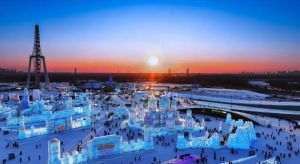The freezing of economic activity to stop the spread of the coronavirus epidemic led to the unprecedented contraction of global trade in April 2020, according to the World Trade Monitor report published by Dutch institute CPB (www.cpb.nl).
The volume of trade decreased by a monthly rate of 12.1%, almost double the previous top contraction of 6.2%, recorded in December 2008.
The annual decline in global trade accelerated to 16.2%, from 5.4% in the previous month, amid a revision of the March 2020 monthly contraction to -2.4%, from an initial estimate of -1.4 %.
This dynamic was mainly due to the massive fall in trade in developed economies, especially the Eurozone and the United States.
The Eurozone trade volume index fell to its lowest level in 17 years, as the annual decline accelerated to 28.5% from 11.4% in the previous month, amid a monthly decrease of 20.1%.
The volume of exports from the Eurozone accelerated its annual decline to 30.5% in April 2020, from 10.9% in the previous month, amid a monthly decline of 23.1%, and imports fell at an annual rate of 26.5%, in the context of a monthly decrease of 17%.
Trade contraction in the United States, has seen an acceleration, up to an annual rate of 19.1%, from 5.4% in the previous month, amid a monthly decline of 16.8%. Exports decreased by a monthly rate of 22.5%, while the decline of imports was 11.3%.
The negative trend will continue in the US, as shown by the Cass Information Systems (CIS) transport index. The report for May 2020 shows the acceleration of the annual decrease to 23.6%, from 22.7% in the previous month, amid a slight monthly increase of 1.6%, after the 15.1% drop in the previous month.
"Given that April was the month with the strictest isolation measures, the decline in trade was driven by disruptions in production and distribution chains, but also by declining global demand for imports," Joanna Konings, economist with ING, told the Financial Times.
The same CPB data also shows an annual decrease of 12.1% in global industrial output in April 2020, after a decline of 4.6% the previous month. Massive drops were seen in all developed economies, especially in the Eurozone, where industrial production accelerated its annual decline to 29.3%, from 13.9%, following a monthly decrease of 18.3% .
The volume of trade in emerging economies accelerated its annual decline to 8.3%, from 1% in the previous month, amid a monthly decline of 7%.
According to CPB data, China's trade volume returned to negative territory after the March 2020 recovery. The annual decline accelerated to 1.9%, from 1.4%, amid a 3% monthly decline. The volume of imports decreased by an annual rate of 4.8%, and exports increased by an annual rate of 1.3%, after a decrease of 5.3% in the previous month, amid a monthly decrease of 2.1% .
Eastern European economies recorded the largest annual decline in trade in the last four and a half years (5.9%), after an increase of 1.2% in the previous month, amid a monthly decline of 4.5% .
The volume of imports decreased at an annual rate of 4.5%, after rising 3.7%, amid a monthly decrease of 5.4%, and exports accelerated their annual contraction to 7.1%, to 1.2%, in the context of a monthly decrease of 3.6%.
The negative trend in trade has also accelerated significantly in emerging economies in Asia, excluding China, where the annual decline reached 10.2%, from 1.3%, amid a monthly decline of 8%. Exports decreased at an annual rate of 9.1%, in the context of a monthly decrease of 8.3%, and imports accelerated their annual decrease to 11.2%, from 1.2% in the previous month, on the back of a monthly decline of 7.7%.
The first estimates of the PMI (Purchasing Managers' Index) for the Eurozone and its main economies in June 2020 were seen as signals for the return of optimism and of the economic recovery.
However, Richard Barwell of BNP Paribas Asset Management warned that "if one understands how IHS Markit indices are constructed, then the data indicates an L-shaped recovery," according to the Financial Times.
It is is in this context that the negative forecasts from the International Monetary Fund and the World Trade Organization (WTO) have appeared as well.
The latest IMF estimates show a 11.9% contraction in global trade this year, more than twice as much as the decline in global Gross Domestic Product, estimated at 4.9%.
According to the WTO's pessimistic scenario, the volume of global trade could shrink by about 32% in 2020, a scenario which is considered unlikely, while the optimistic scenario predicts a contraction of 13%. The WTO forecast for next year expects a 5-20% increase in global trade.
This is only a strong acceleration of the phenomenon of de-globalization, which has manifested itself significantly in the years since the global financial crisis, given that the growth of global trade in five of the last ten years has been below the growth of global GDP.






























































